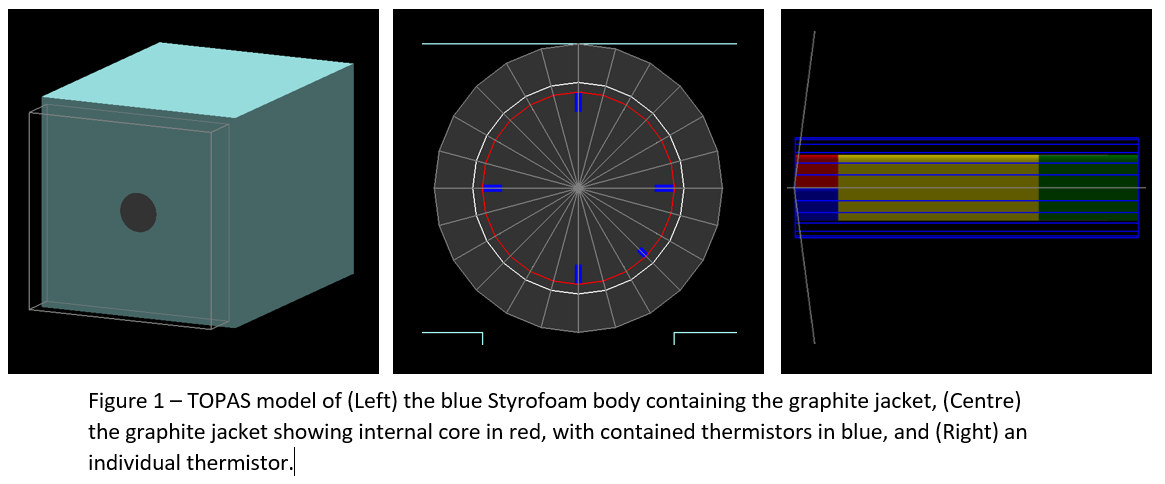Monte Carlo modelling of a Small-body Portable Graphite Calorimeter for ultra-high dose rate beams
John Cotterill,
United Kingdom
OC-0931
Abstract
Monte Carlo modelling of a Small-body Portable Graphite Calorimeter for ultra-high dose rate beams
Authors: John Cotterill1, Russell Thomas1,2, Anna Subiel1, Nigel Lee1, David Shipley1, Hugo Palmans1,3, Ana Lourenco1,4
1National Physical Laboratory, Medical Radiation Science, London, United Kingdom; 2University of Surrey, Engineering and Physical Science, Guildford, United Kingdom; 3MedAustron Ion Therapy Center, Medical Physics, Wiener Neustadt, Austria; 4University College London, Medical Physics and Biomedical Engineering, London, United Kingdom
Show Affiliations
Hide Affiliations
Purpose or Objective
Accurate dosimetry in ultra-high dose rate proton beams is complicated as reference dosimeters such as ionisation chambers require large ion recombination corrections. The National Physical Laboratory (UK) has built a Small-body Portable Graphite Calorimeter (SPGC) which may offer an improvement in accuracy on current secondary standard dose measuring devices because its response is dose-rate independent. Additionally, it is more practical to operate than a primary standard.
A detailed model of the SPGC has been built in TOPAS (v3.6.1), shown in Figure 1, to derive the k_imp and k_gap correction factors used to convert the dose to its graphite core to a dose to homogeneous graphite. k_imp corrects for the non-graphite constituents of the calorimeter, such as core thermistors and surrounding Styrofoam. The k_gap correction factor accounts for the presence of an air gap between the core and its surrounding jacket.

Material and Methods
The SPGC comprises a graphite core with built-in thermistors to measure the temperature rise for a given delivered dose. The core is surrounded by a graphite jacket, with an air gap to minimise the heat transfer between the components. The jacket is embedded in Styrofoam to better thermally isolate the body from the environment.
Three modelled geometries of the calorimeter are required to determine the correction factors: a full geometry including non-graphite components, a pure-graphite geometry where all non-graphite components are modelled as graphite, and a compensated geometry where the air-gaps are filled with graphite, but the build-up depth to the core is kept constant. The ratio between the dose measured in the core in these geometries gives the correction factors.
The geometries were simulated using a 5cm x 6cm field of 249.7MeV protons with a Gaussian energy spread (standard deviation) of 0.25MeV. The effect of substituting the surrounding Styrofoam for graphite to determine both correction factors was also examined.
Results
Provisional (without modelling core thermistors) k_imp and k_gap correction factors where the Styrofoam had not been substituted were calculated to be 1.0014 ± 0.0001 and 1.0006 ± 0.0001 respectively. The graphite substituted Styrofoam geometry gave 1.0057 ± 0.0001 and 0.9997 ± 0.0001 respectively. All quoted uncertainties are Type A.
These values show reasonable agreement between the k_gap correction factors in the two configurations. However, there is a large discrepancy between the values determined for the k_imp correction factors.
Conclusion
Provisional simulations show that modelling the surrounding Styrofoam material of the SPGC as graphite leads to a significant increase in the k_imp correction factor. This is due to the increased amount of scatter into the core, and therefore dose, from the surrounding material. Separation of the scattering component into a new correction factor, k_scat, may be required. However, preliminary analysis shows agreement within 0.2% of the primary standard after applying these corrections.